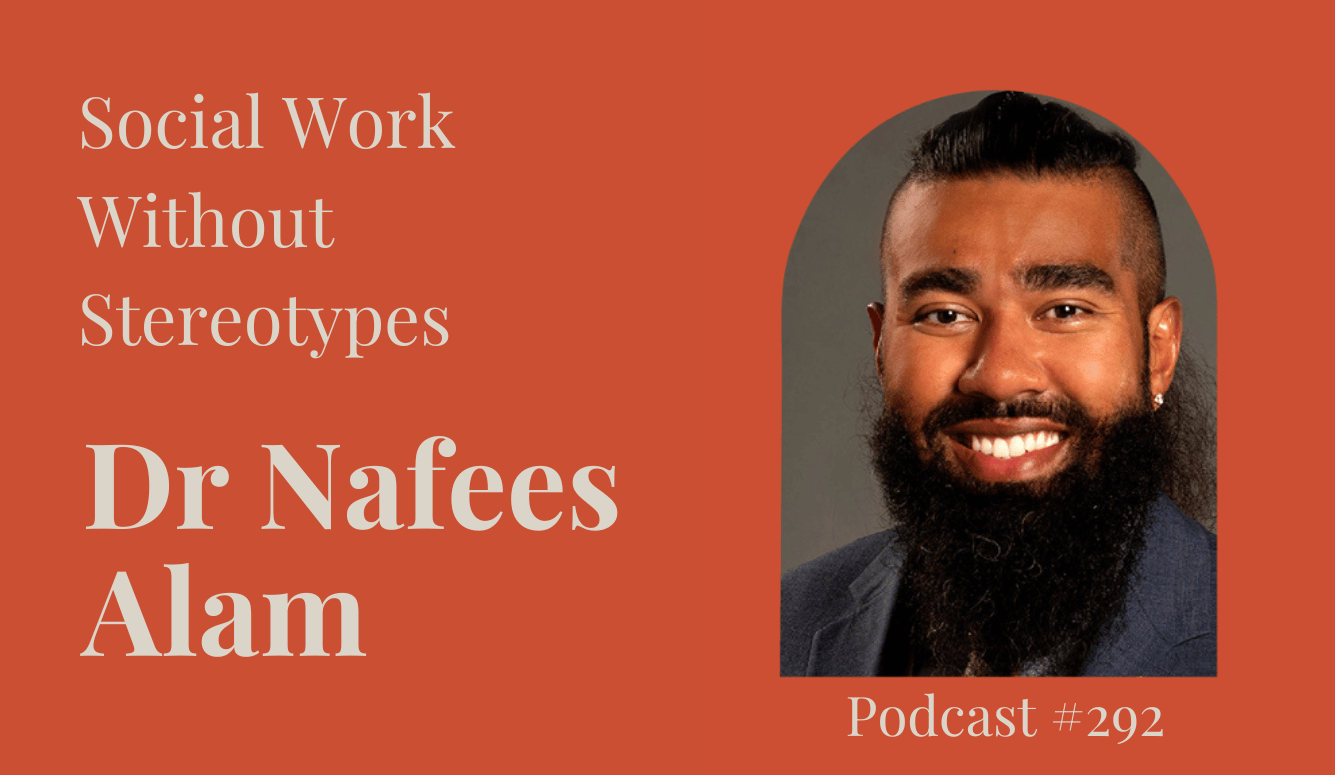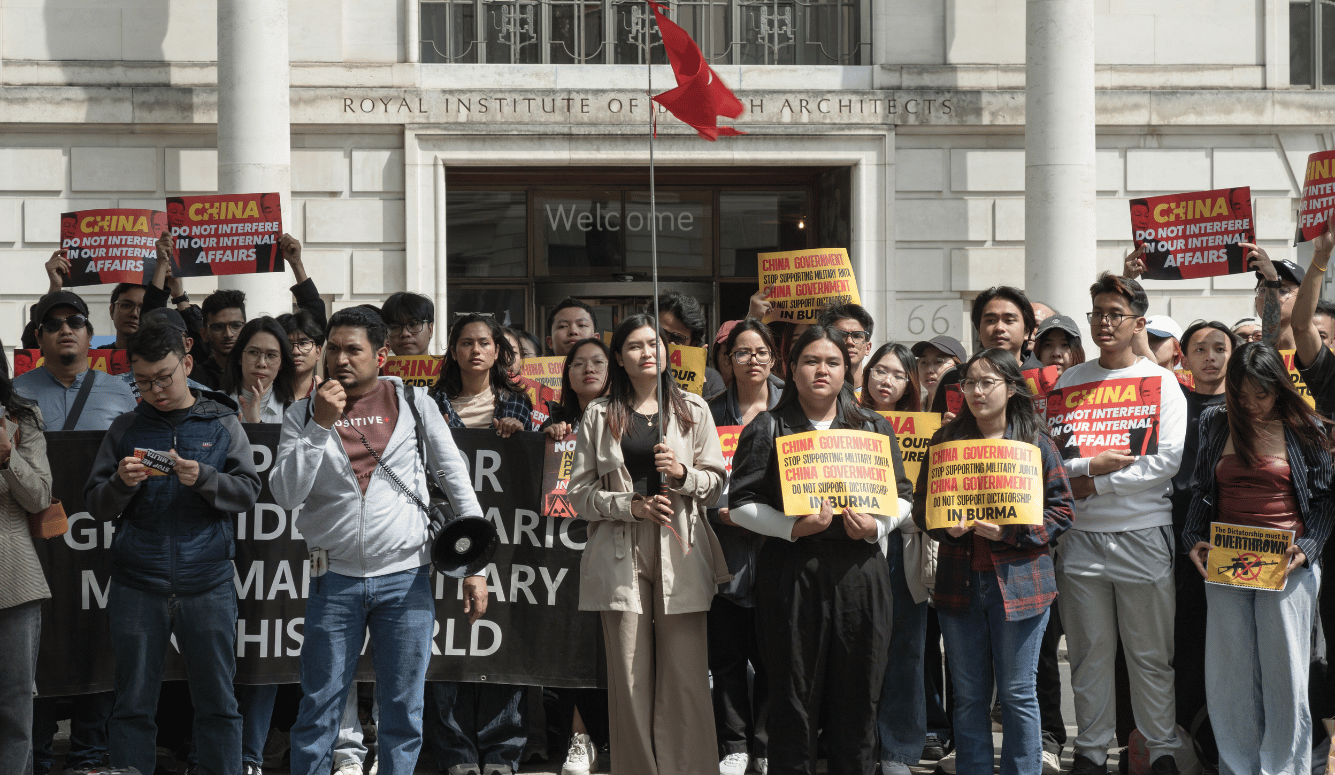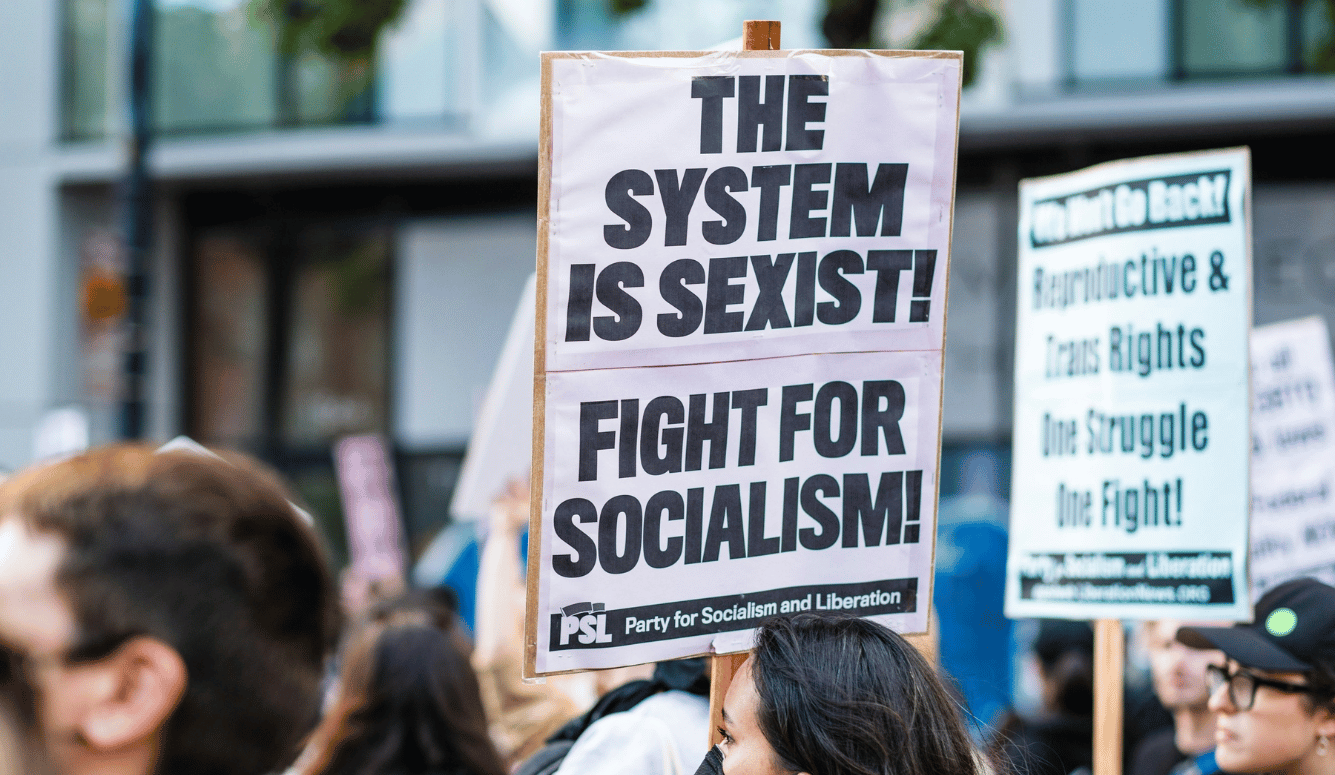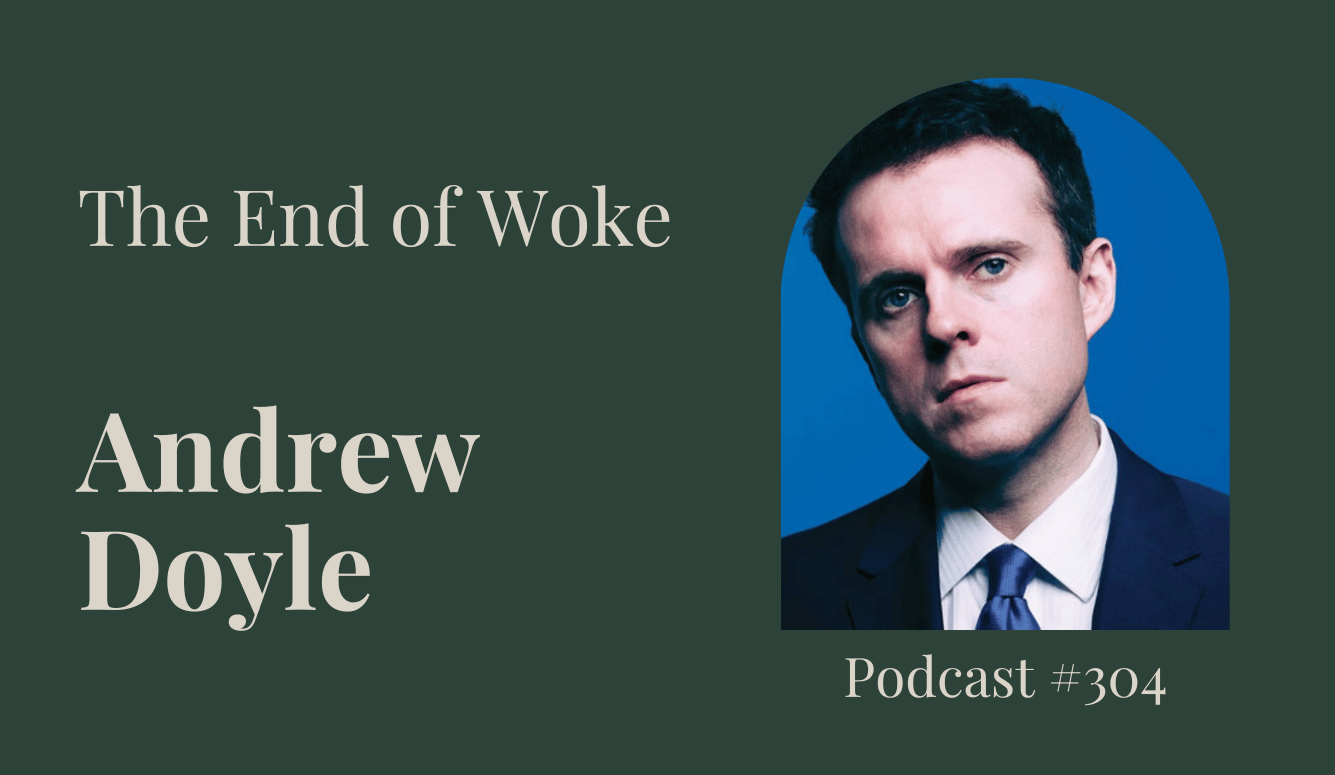Podcast
Podcast #292: Social Work Without Stereotypes
Quillette podcast host Jonathan Kay talks to Heterodox Academy scholar Nafees Alam about the need to challenge political orthodoxies in the field of social work

Introduction: Welcome to the Quillette podcast. I’m Jonathan Kay just back from a week in Brooklyn, where I attended the Heterodox Academy annual conference. Heterodox Academy, as many of you know, is a non-partisan organisation for academics who want to protect open inquiry, intellectual pluralism, viewpoint diversity, and a spirit of constructive debate on university campuses. Among its original creators was Jonathan Haidt, who many of you will know as the co-author of the famous book, The Coddling of the American Mind.
In past years, Heterodox Academy conferences have examined the question of how to push back effectively against demands for ideological conformity from dogmatic progressives, but more recently, as many speakers in Brooklyn took pains to emphasise, we’re starting to see illiberal pressures coming from the right side of the political spectrum. In part, this is simply because the culture war is cyclical and left-wing overreach on issues related to race and gender were bound to eventually awaken a vigorous counterattack from conservatives and principled classical liberals, but of course the phenomenon is also tied up with the election of Donald Trump, who’s used his federal government powers to pressure—some would say bully—universities to ally their DEI policies with his demands.
Another notable development at Heterodox Academy in recent years has been the emergence of different sub-communities that correspond to different areas and academic specialties. These have names like HxAnthropology, HxCanada, and HxPhilosophy, and, in my opinion, the conference sessions devoted to these specialties were some of the most interesting events that I attended. This included a session dedicated to scholars in the field of social work, which is how I met this week’s guest, Dr Nafees Alam, an associate professor in the field of social work at the University of Nebraska at Kearney.
As Dr Alam told the audience in Brooklyn—and as he’ll discuss in more detail in our conversation—the field of social work is full of well-intentioned professionals, trying to do the right thing, often in difficult circumstances and with limited resources. Unfortunately, the definition of what constitutes the right thing can easily be distorted by political and ideological factors, including a fixation on markers of group identity, which, as Professor Alam stresses, often has little to do with the individual circumstances of the people in need whom social workers are mandated to assist. Over time, Professor Alam has become concerned about the intrusion of ideological dogmas into the social work education field, which is why he’s taken on a leadership role in creating the Heterodox Academy social work community. He’s also recently committed his views to a scholarly paper published in the journal Research on Social Work Practice, co-authored with his University of Nebraska colleague, Heidi Rueda. That paper is entitled Heterodox Social Work: Advancing Viewpoint Diversity, Constructive Disagreement and Open Enquiry.
And just one editorial note: during our discussion, you’ll hear me make reference to remarks delivered by one of Professor Alam’s co-panellists in Brooklyn, but without naming her. That scholar is Tiffanie Jones, a quantitative research specialist who lectures on social work at Howard University.
And now, my interview with Nafees Alam, associate professor in the department of social work at the University of Nebraska at Kearney.
The following transcript has been lightly edited for concision and readability.
Jonathan Kay: Nafees Alam, thank you so much for joining the Quillette podcast.
Dr Nafees Alam: Thank you for having me. I appreciate it.
JK: I have to admit, this is the first podcast we’ve done on the field of social work—never mind heterodox social work. We haven’t even done orthodox social work, so we’re playing catch-up here. I think a lot of people know of social work as a government service. They don’t know a lot about the academic aspect of it. Would it be fair to say that most people enrolled in social work programmes at universities are destined to work for government at some level?
NA: Either directly or indirectly, yes. There are many private agencies as well as public ones that employ social workers. Hospitals employ social workers. And in fact, social work is bleeding over into the corporate space. My research speciality is sports social work, so we work with athletes and use sport as social work interventions. There are a number of areas social workers can go into.
JK: What would a sports social work context look like?
NA: Well, it’s about working with athletes. It differs from sports psychology in that sports psychology focuses the athlete being the best athlete they can be. Sports social work focuses on the athlete being the best person they can be. That includes family therapy, group counselling—we’re not as concerned with their sport of choice, but rather making sure they’re living the best version of their lives, whatever that means to them.
JK: Does this blur into psychology or what’s often called life coaching?
NA: I wouldn’t say so. Sports psychology is about how to be the best athlete. Sports social work isn’t necessarily about that—though of course, if things are good at home, performance on the field or court should also be better. But we focus specifically on societal issues.
JK: What percentage of a typical graduating class would get a job with the government, assisting families in need, people experiencing poverty or marginalisation, child services, that sort of thing?
NA: I don’t know the exact percentages, but I would say the majority of graduates don’t go into sports social work—it’s a very niche area. Most would end up working for a hospital, a public organisation, or a private one in areas such as child welfare, elderly care, or respite care. That would cover the majority of social work graduates, yes.
JK: Since you’re an academic in the field, maybe you can help with the history. My lay person sense is that many functions now done by social workers, if you go back a century or more, they were done by religious charitable institutions or civic groups. When did social work become an academic discipline? When did it begin developing systematic theories and ideas?
NA: Historically, social work was charitable work, often carried out by religious organisations. I can’t say exactly when it became an academic discipline, but I can say it’s been one for as long as I’ve been alive—and I’ve been alive for over forty years.
JK: But when you’re citing foundational texts in your field, what era are they from?
NA: I usually look to seminal articles from the 1970s and 1980s. That would mark the start of what I consider modern social work.
JK: Things have always been ideological—even if each generation feels it’s more ideological than the one before. I’m older than you and I remember the late Cold War period, into the Bill Clinton years, when there was heated debate around welfare reform and single motherhood. There was even a subplot involving the sitcom Murphy Brown.
Back then, conservatives and liberals argued about what we still call the root causes of poverty. Some said welfare causes family dysfunction because you’re giving people money without conditions, destroying their work ethic. Would you say social work has always been political to some extent?
NA: I suppose it has. You’re touching on the Thomas Sowell perspective—that welfare negatively impacts those who receive it. So yes, I’d say that’s true.
JK: I remember that stereotype of the so-called “welfare queen”—a woman collecting cheques and supposedly having more children to get more money. I doubt there was much truth to it, but at the time, it was conservatives who were politicising the very idea of a social safety net.
Now, I just read your paper Heterodox Social Work: Advancing Viewpoint Diversity, Constructive Disagreement, and Open Inquiry, which you co-authored with—am I pronouncing her name right—Heidi Rueda?
NA: Heidi Rueda, yes.
JK: Right, thank you. The point you make in the paper is that the dominant ideological school in the field now swings in the other direction.
If you had to summarise the dominant ideological viewpoint in the academy with regard to social work, how would you describe it?
NA: I’d say it’s focused on groups and demographics. There’s a tendency—which is my main concern—to think that your demographic variables predominantly determine who you are. If we return to Martin Luther King’s notion of content of character versus colour of skin, extrapolated to today, the colour of skin might represent externally present demographics like race, gender, or sexuality, and content of character would be the inner traits that make us unique.
The dominant perspective, at least in my view—and I don’t want to speak for anyone else, including my co-author—my perspective is that the dominant perspective seems to be that the colour of skin, those external markers, define someone’s character. That’s problematic.
If I can use myself as an example: I have a darker complexion—I’m an ethnic minority. I was born in Libya, grew up in Bangladesh, and there tends to be an assumption that, since I’m an immigrant to the United States, my story must be one of poverty—a “started from the bottom, now we’re here” type of narrative, as Drake would put it. But people are often surprised to learn that my parents were fairly affluent, both in Libya and Bangladesh. We came to the United States through the visa lottery programme. My parents arrived with employment already secured.
Many are surprised by that. They say, “Well, your immigrant story doesn’t fit the immigrant story,” and somehow my story is seen as less legitimate. I question that assumption.
JK: So if I can extrapolate, would it be fair to say that if someone like you found themselves in need of services from a social worker, their first instinct might be to assess how your status as an immigrant had shaped your experience of discrimination or access to services? They might assume you had trouble with English, for instance. Is that accurate?
NA: They usually do. And to be fair, I do have trouble with English since it’s my fourth language. So if you hear me stuttering or saying “um” a lot—which you might edit out—that’s why. Bengali is my first language. Arabic is second because my mum is Muslim and I had to read the Quran. She also liked Hindi films, so Hindi became my third. I started learning English when we arrived in the US when I was seven.
But yes, there is a tendency to assume that because of my appearance and background, we must have needed all the available social services, and that we had no educational or employment support. While we did need help—as most immigrants do when adapting to a new country—our experience was a bit different from what many social workers would consider the typical immigrant story.
JK: I completely get what you’re saying about expectations. I have a Sri Lankan-born friend in Toronto who moved to Vancouver and lived there for 25 years. He jokes that when he arrived, he saw lots of “brown guys mowing the lawns of white guys,” and when he left, it was the other way around. He’s allowed to say that, of course—I’m just quoting him. Obviously, that’s a simplified picture, but there are many wealthy Asians in Vancouver, both South and East Asians, and Russians, and Canadians of every background.
Still, there is often a grain of truth to group-based thinking.
Let me give an example from Canada. I know you’re in Nebraska, but here Indigenous Canadians face a disproportionate number of challenges—socioeconomic issues, high unemployment, poverty. Much of this is rooted in historical injustices. Life on reserves—somewhat analogous to American Indian reservations—can be very difficult. And there’s a tragic sameness to the challenges Indigenous people face when moving from rural or remote communities into big cities.
One Indigenous person once told me that moving from a fly-in reserve to Toronto is a bigger culture shock than moving from Hong Kong to Toronto. And in these contexts, you often have white child services workers or bureaucrats dealing with Indigenous clients who genuinely need support. An orthodox school of social work might argue that the assumptions these workers make—about racism, poverty, discrimination—are justified.
Do you think something similar applies in certain black communities in the US? Communities that have experienced historical marginalisation, perhaps living in urban ghettos? Is there some truth to reductionist group-based beliefs?
NA: There is some truth, but eighty percent is not 100 percent. My issue isn’t with starting from demographics—we always do that. We get an intake file before meeting clients, so yes, assumptions are going to be made. But what I question is that other twenty percent: why aren’t individual black or brown people allowed to fall outside the expected narrative?
JK: Is part of it that individuals who don’t fit the expected narrative often aren’t even using government services? They may not be the people social workers typically deal with. Speaking of which, you mentioned “intake files.” Can you explain what an intake file looks like for a social worker?
NA: Yes, though it depends on the service. When I worked at New York Foundling Hospital, the file would include the ages of family members, the presenting issues—for example, educational neglect if a child had missed school repeatedly. We might get the criminal history of a parent if applicable, the family demographics, marital status, whether there are step-parents or others living outside the home who are involved.
Sometimes it includes pet information. Some people, like me, are very afraid of dogs or allergic to cats, so that’s important. The intake file is essentially an introduction to the home you’re walking into. Its function is to ensure that, for example, if five children are listed but you only see four, that raises questions. Is it a typo? Or is there something else going on?
JK: When a social worker enters a home after reviewing the intake file, what percentage of those households actually want the social worker there? It's a naïve question, but I think many listeners wouldn’t know.
NA: That’s a hard question. If it’s a mandated service, the answer is zero. If it’s court-appointed, they don’t want you there.
JK: But you started with an example from a hospital. Would that be a case where someone comes in with chronic issues and the medical team flags underlying social problems?
NA: That could happen. But the example I had in mind was a child who came in with bruises that suggested they were being gripped in a particular way. We were investigating whether that was inappropriate punishment. Often, though, we find that the situation isn’t as bad as it appears. That’s part of our job, too: to validate when things are actually okay. But we still need to keep an eye on things in case there is more going on.
JK: Here in Canada, as I’m sure is also true in the US, we occasionally hear horror stories: a child dies or is seriously injured, and buried in the news story is a line about a social worker having visited the house a few weeks earlier and said everything looked fine. I imagine no one wants to be that social worker. Is there a kind of professional fear of false negatives—cases where you miss a warning sign?
NA: Yes, absolutely. I don’t know if there’s been research on it, but common sense says yes. It weighs heavily on your mind.
JK: You’ve been in that situation. Was that fear in the back of your mind?
NA: One hundred percent. Because if something goes wrong, I don’t want people saying, “Nafees is a terrible social worker.”
JK: And sometimes, of course, you can make the right decision. You look at the indicators and, on balance, there doesn’t seem to be a significant risk. But life can be random. After tragedies, neighbours often say, “We had no idea.”
NA: Yes. When I practised in New York City—where you and I met—there was a case involving Nixzmary Brown, a child who died. A social worker had fabricated home visits. In response, the Administration for Children’s Services decided to err on the side of over-correcting. So during that period, we would remove children if we had any doubts, and return them if those doubts were later resolved. It felt like playing defence.
JK: I can’t imagine what it’s like for a parent to have their child removed, even temporarily. That must be incredibly traumatic.
NA: Oh my goodness, do I have stories. I did a number of removals back in the day. No matter how emotionally strong you are, you can’t go through it without breaking down.
I remember one particular case. I arrived at a home where a removal was taking place. The parent had been notified in advance and was cooperating because they understood that we were all working toward reunification. A police officer accompanied me to ensure everyone’s safety. The child in question was three years old.
I told her, “Give your mama a goodbye hug. You're coming with me now. She packed your things, and we’ll go. I’ll make sure nothing happens to you, and you’ll see your mum again soon.” The child broke down and looked to her mum—as that’s the emotional anchor. The mother, to her credit, stayed strong and reassured her child: “Yes, baby, you’re going to be okay. You’re just going with him. He's a good person. You’ve seen him before.”
Of course, the child cried. I held her hand, put her in the car seat, and drove her to the office. It was a ten to fifteen-minute drive. One hand on the wheel, the other reaching back to hold her hand. She cried the whole way. I told her, “If you need to cry, cry. That’s okay. I’d cry too.”
When we got to the office, there was a childcare room, but she wanted to stay with me. Even though I was the one removing her, I was a familiar face. She sat beside me while I worked on finding a kinship placement. Eventually, I found two aunts who lived together about an hour and a half away.
She had calmed down by then, was playing with toys, though she didn’t eat the chicken nuggets we gave her. I kept urging her to eat. I put her in the car again and drove her to the aunts’ home. While doing the home survey to ensure everything was appropriate, she said, “Don’t go, don’t go,” and started crying again.
I began to wonder, “Is something wrong here?” I rang my director to ask about any red flags—criminal history, anything. They said, “No, that’s not it. She’s bonded with you. You’ve been with her for five or six hours, and you’re the only consistent person she knows in this moment.”
She kept saying, “Stay, stay, there’s spaghetti here. They have toys. We can get chicken nuggets.”
Driving away, I realised this was a real-life trauma bond that had developed in just a few hours. But the aunts brought her back in a few days later for something, and she didn’t want anything to do with me. She had bonded to them now. When she looked at me, she looked afraid. It was an emotional rollercoaster.
JK: That’s tough—not great that she looked at you with fear, but it’s good she bonded with her aunts. That story gives us a lot of context. Let’s revisit those events: how would an ideologically driven social work education have altered your handling of that situation? Would it have changed anything?
NA: I don’t think it would have affected that particular situation, because it was fairly straightforward. But I do wonder if race had been a factor. This was a white family. If it had been a black family, I suspect there might have been questions about whether race played a role.
JK: So, in a sense, this case is a bit like “man bites dog” from an ideological point of view. It lacks the oppressor-oppressed dynamic that often gets emphasised in contemporary theory?
NA: Yes, I think that would be true. Although if it had been a black family, there might have been questions about whether the removal was racially motivated. I wonder about that.
JK: Here in Canada, we often see statistics that show, for example, a higher percentage of black students being suspended for similar infractions compared to white students. I assume social work students in the US are also presented with similar data. It’s a race-obsessed country in many ways—even buying stamps collects racial data. Are these statistics part of your training?
NA: Im sure they are, though I can’t recall specific ones offhand. But in doing the research and writing the articles I have, I’ve certainly encountered them. And yes, the same trend exists in the US: ethnic minorities often receive harsher disciplinary actions for similar infractions. But I’d ask what other variables might explain those disparities.
JK: You mention this in your article. You write: “Unlike critical perspectives that prioritise equality of outcome and group-based identity analysis, classical liberal scholarship maintains that disparate outcomes require rigorous scientific investigation before attributing causality to social structures.” That last phrase—“attributing causality to social structures”—is academic jargon. But in layman’s terms, it’s about blaming the system, right? Is that one of the core issues?
NA: Yes, blaming the system or blaming demographics.
JK: So are students of social work encouraged to look past the specific circumstances they see in front of them and instead draw conclusions based on race, immigrant status, and other structural categories? Does that compromise their ability to exercise individual judgement?
NA: Perhaps. I wouldn’t say they draw full conclusions based solely on that, but those demographic factors definitely influence their conclusions.
JK: This is a regulated field, and I learned during your presentation in Brooklyn that there’s a code of ethics from the National Association of Social Workers (NASW). It includes language about understanding our own biases, engaging in self-correction, recognising clients as experts in their own culture, committing to lifelong learning, and holding institutions accountable for advancing cultural humility. That all sounds good. Do you agree with those principles?
NA: I do, because they place the onus on the individual, not the group the individual belongs to.
JK: But you also make the point—and I’m paraphrasing here—that while the code encourages introspection and humility, it doesn’t demand that same level of critical reflection when it comes to ideology. You say numerous studies have shown that social work classrooms alienate or even belittle students with moderate or conservative leanings. And you cite data showing that not everyone in the field is a progressive: 23.5 percent of students identify as moderate, seven percent as conservative, and 35 percent of licensed clinical social workers consider themselves religious. So the field’s leadership isn’t really representative of its members. Is that fair?





